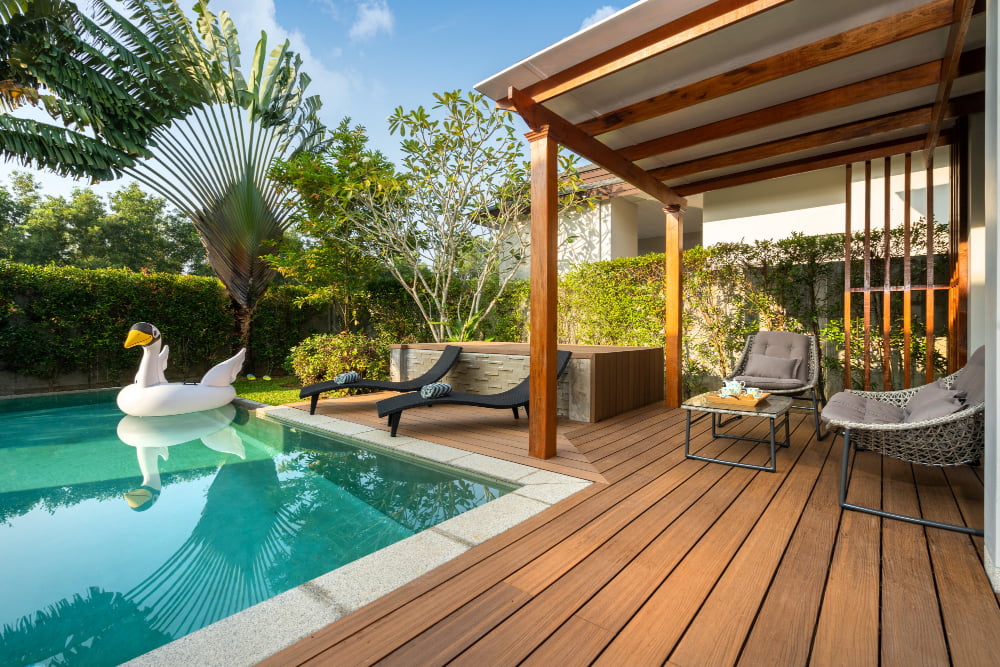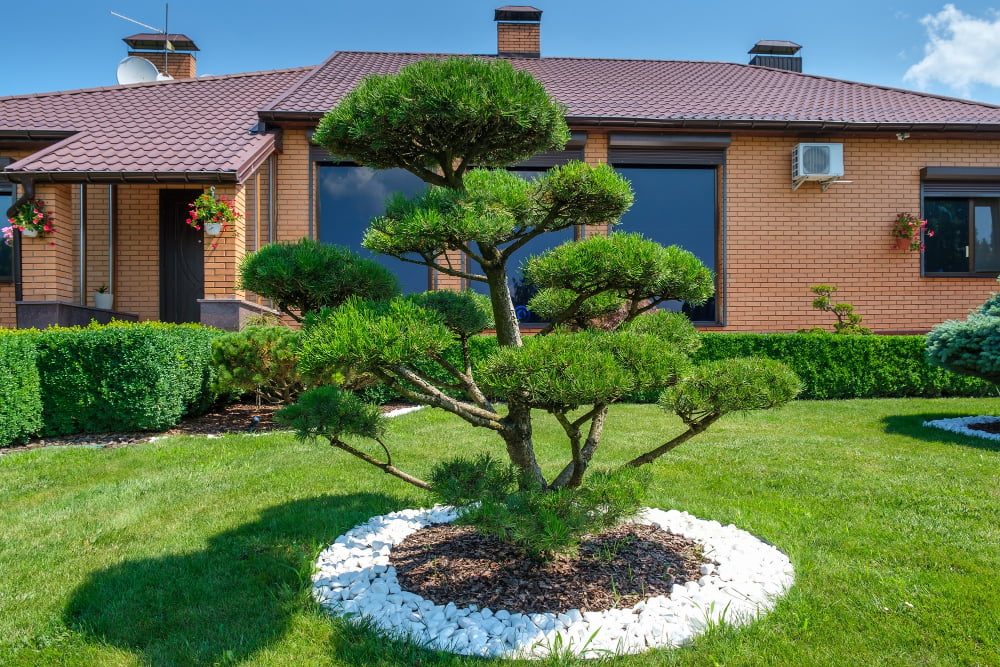Landscaping is an effective way to create a natural privacy barrier. Planting tall shrubs, trees, and hedges are all great options for creating a living wall that will block out unwanted views and provide additional privacy.
For further screening, consider adding trellises or lattice panels with climbing vines or other plants.
Creating a natural privacy barrier around your property can be a great way to add beauty to your landscape while also providing some much-needed privacy.
From planting trees and shrubs to constructing fences and walls, there are many different ways you can use landscaping to create a natural privacy barrier.
In this blog post, we’ll explore some of the best techniques for creating a beautiful yet effective privacy barrier in your outdoor space.
Planting Trees

Trees provide a physical barrier that can block out unwanted views and noise from the outside, while also providing shade and shelter for your outdoor space. When selecting trees for this purpose, it’s important to consider their mature size and growth rate so you can plan accordingly.
Planting evergreen varieties such as pine or spruce will ensure year-round coverage, while deciduous trees like maple or oak will provide seasonal color changes. Planting in clusters of three or more will create a denser screen than single specimens.
Be sure to leave enough room between the plants so they have plenty of space to grow without overcrowding each other.
Shrubs

They can be used to block out unwanted views, provide shade, and add texture and color to the landscape. Shrubs come in many shapes and sizes, so it is important to choose the right type for your needs.
Taller shrubs such as evergreens or hollies can be planted along property lines or around patios for maximum privacy. Lower growing shrubs like boxwoods or yews can be used as borders around flower beds or walkways.
Planting several rows of shrubs close together will also help create an effective barrier from prying eyes. When selecting shrubs for a privacy screen, consider their mature size and shape when deciding how far apart they should be planted.
Hedges

Hedges are typically made up of shrubs or trees that are planted close together and trimmed into a uniform shape. They can be used to block out unwanted views, provide shade, and create an attractive border around your property.
When selecting plants for hedging, it is important to choose varieties that will grow well in your climate and soil type. You should consider the size of the hedge you want to create as some plants may take several years before they reach their full height.
Once planted, hedges need regular maintenance such as pruning and trimming in order to keep them looking neat and tidy. With proper care, hedges can provide an effective natural privacy barrier for many years to come!
Building Fences or Walls

Fences and walls can be made from a variety of materials, such as wood, stone, brick, metal, or even living plants. Depending on the material used and the size of the fence or wall being built, it can provide an effective barrier against noise and visual intrusion from outside sources.
When building fences or walls for privacy purposes, it is important to consider local regulations regarding height restrictions and other factors that may affect construction. If using living plants as part of your privacy barrier design plan, make sure they are well-suited to your climate zone so they will thrive in their environment.
Installing Trellises With Climbing Plants

Trellises are structures made of wood, metal, or plastic that provide support for climbing plants. When placed in strategic locations around your property, they can be used to block out unwanted views and create a sense of privacy.
Climbing plants such as ivy, clematis, and wisteria can be trained to grow up the trellis and form a dense wall of foliage that will help keep prying eyes away from your outdoor space. With regular pruning and maintenance, these plants will continue to thrive while providing you with the desired level of privacy.
Creating a Living Wall With Potted Plants

This involves arranging potted plants in such a way that they form a wall-like structure, providing visual and physical barriers between you and your neighbors. The plants should be chosen carefully, as some varieties are better suited for this purpose than others.
For example, evergreen shrubs or trees can provide year-round coverage while flowering vines can add color and texture to the wall. It’s important to consider the size of the pots when selecting plants; larger pots will require more space but will also allow for greater growth potential over time.
Make sure to water regularly and fertilize occasionally so that your living wall stays healthy and vibrant!
Utilizing Tall Grasses and Ornamental Grasses

Tall grasses, such as bamboo or pampas grass, can be planted in rows to form a dense wall that will block out unwanted views and provide privacy. Ornamental grasses, such as fountain grass or muhlygrass, are also great for creating a natural screen because they have attractive foliage and grow quickly.
Planting these types of plants close together will help ensure that the barrier is thick enough to provide adequate coverage from outside eyes. Adding evergreen shrubs around the perimeter of the area can further enhance the privacy barrier by providing year-round coverage.




